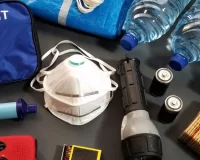Introduction
1. Material Choices Matter
One of the fundamental ways safety product manufacturers can contribute to environmental sustainability is by selecting eco-friendly materials. Traditional materials like plastics and metals often have a significant environmental footprint. Consider exploring alternative materials such as recycled plastics, biodegradable composites, or sustainable wood for safety equipment. By making responsible choices, you reduce the environmental impact of your products.
2. Energy-Efficient Manufacturing
Sustainability extends to the manufacturing process. Implementing energy-efficient practices and utilizing renewable energy sources can significantly reduce the carbon footprint of safety product production. From solar-powered manufacturing facilities to automated processes that minimize waste, there are numerous ways to make manufacturing more sustainable.
3. Extended Product Lifespan
Creating durable safety products that have a longer lifespan is an essential aspect of sustainability. When safety gear and equipment last longer, they require fewer replacements, reducing waste and conserving resources. Businesses can encourage this sustainability practice by offering warranties and repair services for their products, incentivizing customers to keep their gear in use for as long as possible.
4. Recycling and End-of-Life Considerations
To promote environmental sustainability, safety product manufacturers should also consider the end of a product’s life cycle. Design products with recycling in mind, making it easier for customers to responsibly dispose of or recycle their old safety equipment. Developing a take-back program for used products can further support recycling efforts.
5. Reducing Packaging Waste
Excessive packaging is a common source of waste. Safety product businesses can minimize packaging waste by opting for sustainable packaging materials and using eco-friendly printing techniques. Additionally, reducing unnecessary packaging and adopting minimalist design principles can help decrease the environmental impact of your products.
6. Green Certification and Standards Compliance
Many industries have established environmental standards and certifications. Ensuring that your safety products comply with these standards not only helps protect the environment but also provides a competitive advantage. Displaying certifications like ENERGY STAR, EPEAT, or labels like “Certified Green” on your products can demonstrate your commitment to sustainability to consumers.
7. Educating Customers
Environmental sustainability often begins with education. Provide your customers with information on the environmental benefits of your products and how to use them responsibly. Include care and maintenance instructions to extend product life and reduce the need for replacements.
8. Supporting Circular Economy Practices
Embrace the principles of the circular economy, which focus on reducing waste and reusing resources. Develop safety products that are easily recyclable or upgradable, allowing components to be replaced rather than the entire product.
Conclusion
Environmental sustainability in safety products is not only a responsible choice but also a smart business move. Consumers are increasingly eco-conscious, and companies that prioritize sustainability will stand out in the market. By adopting sustainable materials, manufacturing processes, and end-of-life considerations, safety product businesses can contribute to a greener future while also enjoying the benefits of increased customer trust and loyalty. It’s a win-win for both businesses and the planet.







